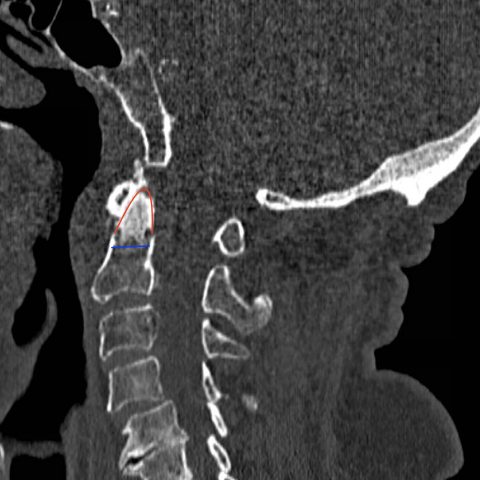
A fracture will usually have a narrow zone of separation between the fracture fragments, and the overall size and shape of the odontoid process will be maintained. Shafafy R, Valsamis EM, Luck J, et al.: Predictors of mortality in the elderly patient with a fracture of the odontoid process: Can we use non-spinal scoring systems? Bone Joint J 2019 101-B:253-259. A feature that helps distinguish an os odontoideum from a type 2 odontoid fracture is the distance between the intact odontoid process and ossific fragment. Mendenhall SK, Sivaganesan A, Mistry A, Sivasubramaniam P, McGirt MJ, Devin CJ: Traumatic atlantooccipital dislocation: Comprehensive assessment of mortality, neurologic improvement, and patient-reported outcomes at a level 1 trauma center over 15 years. Despite their increasing frequency, optimal management of these injuries remain a subject to debate.
#PARTIAL ODONTOID FRACTURE UPDATE#
Orthop Knowl Update Spine 2017.Ĭhapman J, Smith JS, Kopjar B, et al.: The AOSpine North America geriatric odontoid fracture mortality study: A retrospective review of mortality outcomes for operative versus nonoperative treatment of 322 patients with long-term follow-up. Odontoid fractures represent the most common fractures involving C2 and the most common cervical spine fractures in patients older than 65 years. Orthop Traumatol Surg Res 2017 103:1221-1228.Īnderson P, Hah R: Occipital and subaxial cervical trauma. The purpose of this review was to summarize the pathophysiology, evaluation, and diagnosis of these injuries and to review controversies in management and considerations for treatment based on the most recent available literature.Ĭopyright © 2022 by the American Academy of Orthopaedic Surgeons.įaure A, Graillon T, Pesenti S, Tropiano P, Blondel B, Fuentes S: Trends in the surgical management of odontoid fractures in patients above 75 years of age: Retrospective study of 70 cases. The high morbidity and mortality associated with these injuries has made it an area of particular interest among spine surgeons. Fractures of the odontoid peg of the cervical spine Introduction Management of odontoid fractures has been recognised as a challenge since the first description of these injuries in the early 20th century 1. In particular, elderly patients are at risk for nonunion or fibrous malunion after nonsurgical treatment however, increased medical comorbidities and poor bone quality also increase the risks of surgery in this cohort. In the multivariate analysis, the following parameters were significantly associated with surgery as the primary treatment: independent living, less serious comorbidities prior to the injury, type II OFx and major sagittal translation of the odontoid fragment. The CT- and MRI images performed depicted partial osseous fusion within the axis.


Although types I and III injuries have relatively good healing potential with nonsurgical treatment, type II fractures carry a higher risk for nonunion. There were no neurological signs of spinal cord compromise at that time. The present study was carried out to focus on the nuances involved. Despite their increasing frequency, optimal management of these injuries remain a subject to debate. Introduction : Odontoid fractures constitute 9-20 of all adult cervical spine fractures. Odontoid fractures represent the most common fractures involving C2 and the most common cervical spine fractures in patients older than 65 years.


 0 kommentar(er)
0 kommentar(er)
